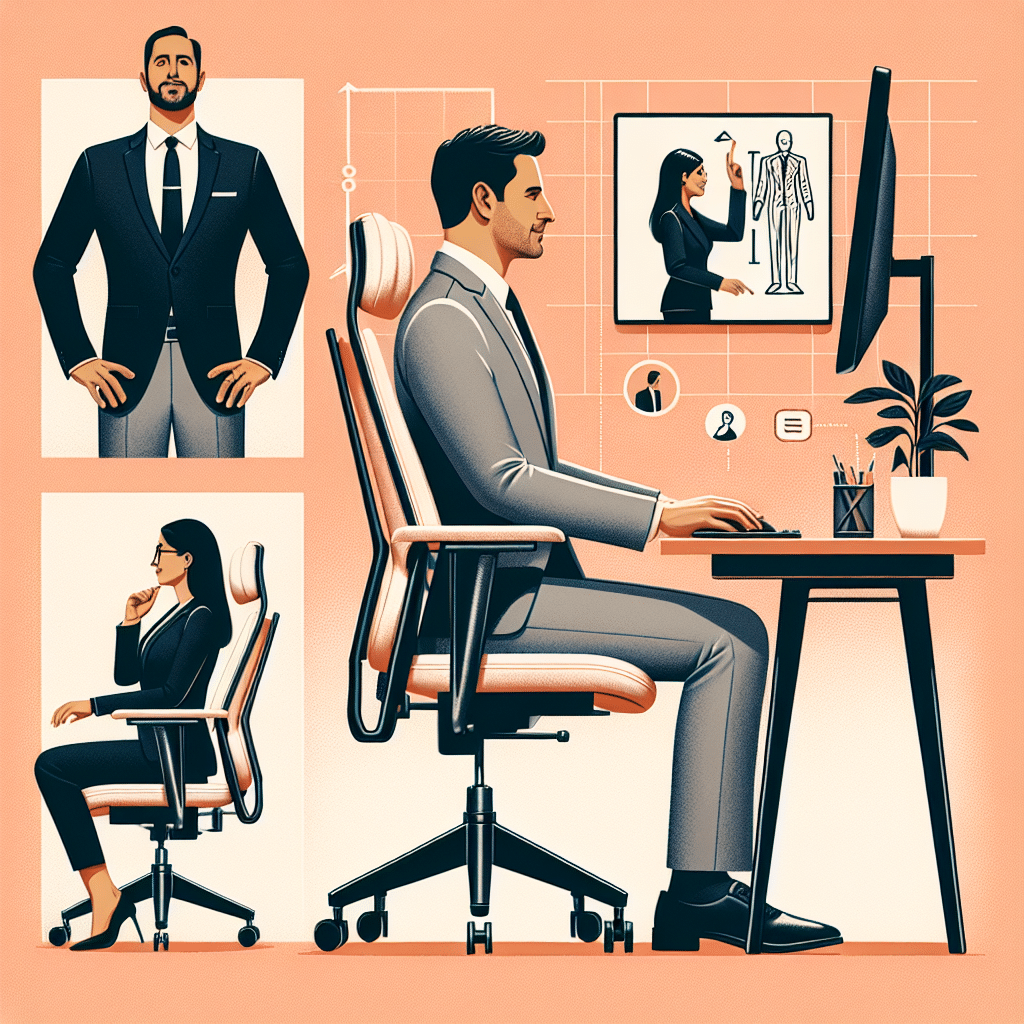When Technology Meets Ethics: Understanding Etiquette for Video Calls
In the digital age, video conferencing has become a vital component of professional communication. Maintaining good posture during video calls is not just about comfort—it reflects professionalism, boosts confidence, and ensures clarity in communication. This article will delve into effective strategies for maintaining optimal posture during video calls, benefiting both your physical well-being and your professional image.
1. Set Up Your Workspace Ergonomically
Optimal Chair Selection
Choose an ergonomic chair that provides adequate lumbar support. Your back should be straight, with your lower back pressed against the chair. The chair height should allow your feet to rest flat on the floor, promoting better posture.
Desk Height
A desk that’s at the right height avoids strain on your shoulders and arms. Your elbows should be at a 90-degree angle when typing or using a mouse. If you’re unsure about your desk height, consider ergonomic adjustments or height-adjustable desks.
2. Position Your Camera Correctly
Eye Level Alignment
Position your webcam at eye level to eliminate the need for tilting your head up or down. A tripod or a stack of books can elevate your laptop or camera. This not only helps your posture but also creates a more engaging visual for your colleagues, as it mimics face-to-face interactions.
Frame Your Shot
Ensure your head and upper shoulders are in the frame. This not only presents a professional image but also allows you to maintain a more natural posture, free from the strain of leaning forward or backward.
3. Mindful Sitting Techniques
Feet Placement
Keep your feet flat on the ground or on a footrest. Avoid crossing your legs, as this can lead to misalignment of your pelvis and spine.
Back Support
Consider using a small cushion or lumbar roll to support your lower back, encouraging an upright posture and preventing slouching during prolonged calls.
Adjust Your Calves
Position your calves parallel to the floor. This helps support your knees and improves circulation, making it easier to maintain focus during meetings.
4. Utilize Effective Arm Positioning
Arm Support
Rest your forearms comfortably on the desk. Your wrists should hover above the keyboard, preventing unnecessary tension. Ideally, your arms should not protrude too far from your body, minimizing fatigue.
Avoid Shoulder Strain
Keep your shoulders relaxed, drawing them away from your ears. If possible, invest in a chair with armrests that supports your arms at a natural angle.
5. Implement Breaks and Movement
Scheduled Breaks
Incorporate short breaks into your video call schedule. Stand up, stretch, and move your body every 30 to 45 minutes to relieve tension and restore circulation.
Desk Stretches
Integrate simple desk stretches during breaks. Neck rolls, wrist stretches, and back stretches can help maintain flexibility and reduce tightness.
6. Mind Your Eye Contact
Direct Eye Contact
Looking directly at the camera while speaking fosters better engagement with participants. It decreases the temptation to gaze downward at the screen, which can lead to a forward lean that compromises posture.
Screen Placement
Place your screen as close to the camera as possible to minimize the distance your eyes must travel. This reduces strain on your neck and helps maintain an upright position.
7. Choose Appropriate Attire
Professional Appearance
Dressing appropriately for video calls not only enhances your professional persona but may also influence your posture. Wearing comfortable yet professional attire can put you in the right mindset.
Comfortable Footwear
While it might be tempting to wear slippers for a video call, consider shoes that provide support and promote a stable posture—especially if your calls involve standing.
8. Harness the Power of Technology
Use Apps and Devices
Consider apps that remind you to adjust your posture or incorporate tech wellness tools like smart chairs or standing desks connected to an app that prompts movement or serves as a reminder for breaks.
Screen Filters
Using software that can alter your screen’s appearance based on your gaze can minimize distraction and help you focus more on posture. Apps that allow you to check your own posture through the camera add a personal touch to maintaining correct alignment.
9. The Psychology of Posture
Impact on Mental State
Good posture is linked to increased self-confidence and lowered stress levels. When your body is aligned properly, you’re more likely to exhibit positive body language, which can influence not only how others perceive you but also how you feel about yourself.
Role in Communication
Engaging in strong, open body language conveys confidence and fosters trust among colleagues. Poor posture can convey disinterest or fatigue, detracting from the message you’re trying to communicate.
10. Follow Up with Feedback
Solicit Opinions
After your video calls, consider asking trusted colleagues for feedback. They can provide insights about how your presence, including your posture, influenced the conversation.
Record and Refine
If you’re comfortable, record your video calls to review your posture and habits. This can highlight areas for improvement and confirm the effectiveness of adjustments you may implement.
By integrating these strategies to maintain good posture during video calls, you not only enhance your physical well-being but also elevate your professional presence. Prioritizing proper alignment and ergonomics can significantly change how you interact with colleagues in the digital workspace, paving the way for more productive and engaging communications. Enhanced posture leads to improved interactions, greater self-confidence, and ultimately, a more successful professional environment.
